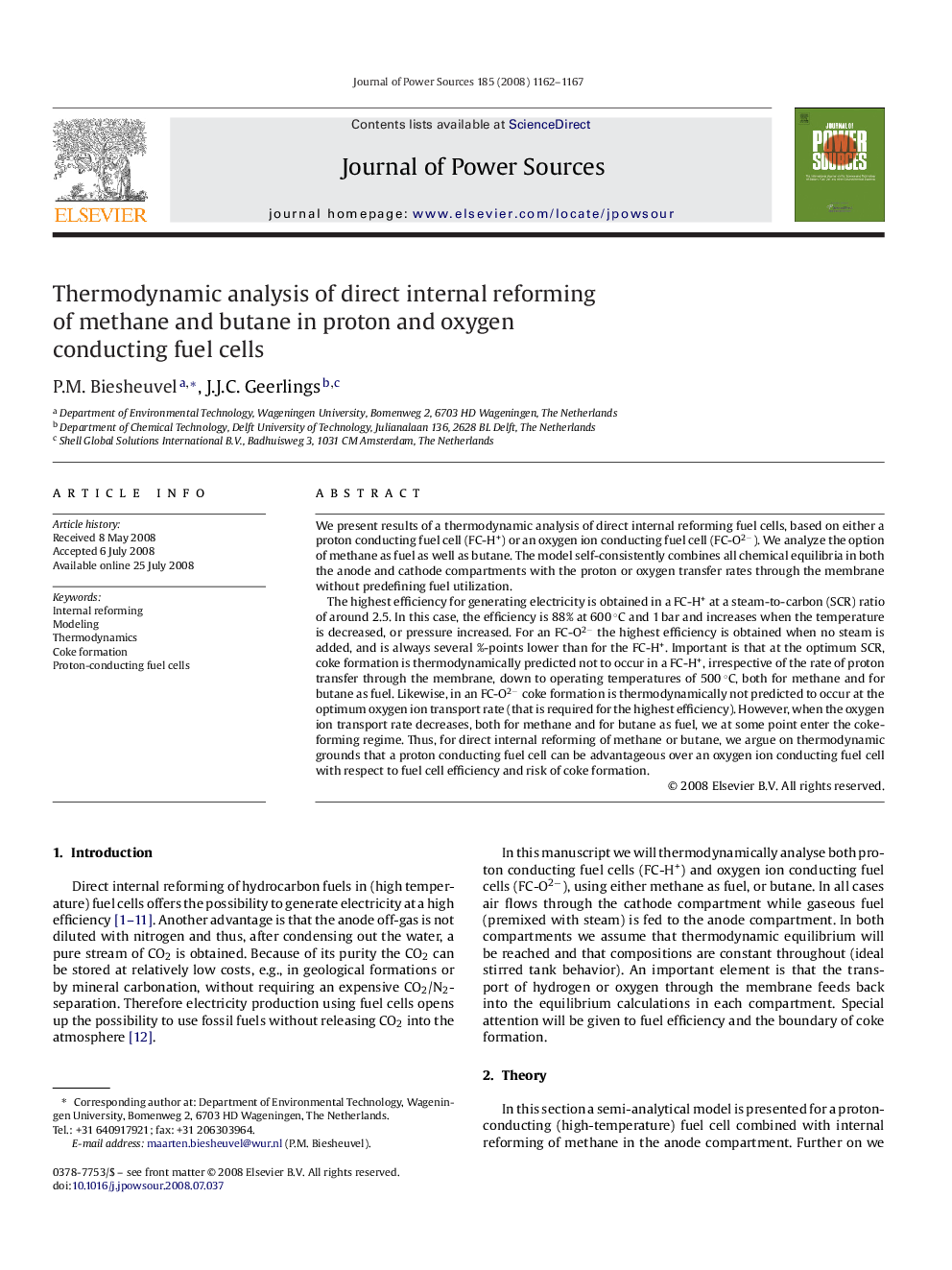| Article ID | Journal | Published Year | Pages | File Type |
|---|---|---|---|---|
| 1290238 | Journal of Power Sources | 2008 | 6 Pages |
We present results of a thermodynamic analysis of direct internal reforming fuel cells, based on either a proton conducting fuel cell (FC-H+) or an oxygen ion conducting fuel cell (FC-O2−). We analyze the option of methane as fuel as well as butane. The model self-consistently combines all chemical equilibria in both the anode and cathode compartments with the proton or oxygen transfer rates through the membrane without predefining fuel utilization.The highest efficiency for generating electricity is obtained in a FC-H+ at a steam-to-carbon (SCR) ratio of around 2.5. In this case, the efficiency is 88% at 600 °C and 1 bar and increases when the temperature is decreased, or pressure increased. For an FC-O2− the highest efficiency is obtained when no steam is added, and is always several %-points lower than for the FC-H+. Important is that at the optimum SCR, coke formation is thermodynamically predicted not to occur in a FC-H+, irrespective of the rate of proton transfer through the membrane, down to operating temperatures of 500 °C, both for methane and for butane as fuel. Likewise, in an FC-O2− coke formation is thermodynamically not predicted to occur at the optimum oxygen ion transport rate (that is required for the highest efficiency). However, when the oxygen ion transport rate decreases, both for methane and for butane as fuel, we at some point enter the coke-forming regime. Thus, for direct internal reforming of methane or butane, we argue on thermodynamic grounds that a proton conducting fuel cell can be advantageous over an oxygen ion conducting fuel cell with respect to fuel cell efficiency and risk of coke formation.
